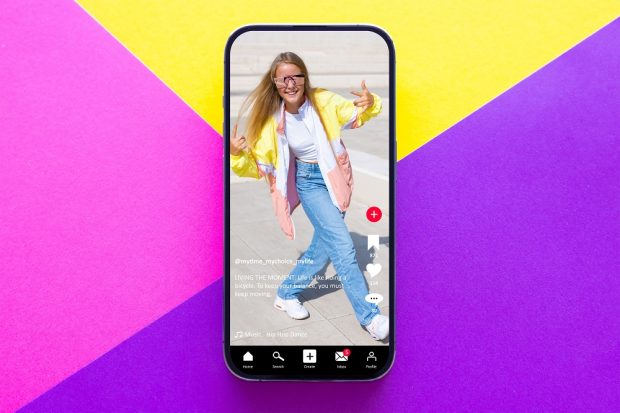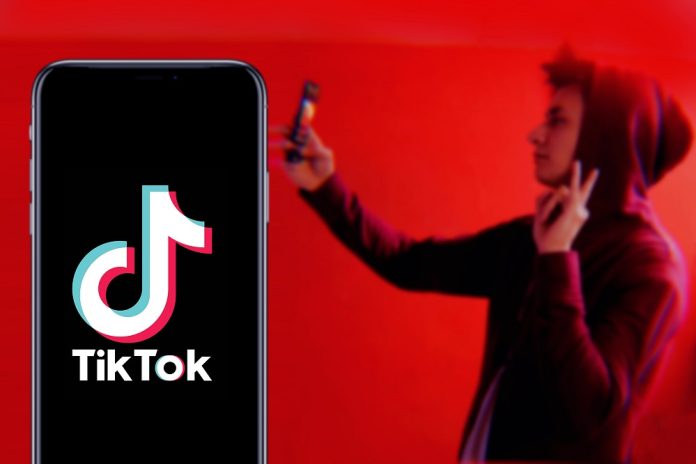In the dynamic world of TikTok, where trends unfold in seconds, mastering the art of content creation requires strategic planning. Enter the TikTok content calendar, a compass for creators and businesses navigating the vibrant landscape of short-form videos. This guide unfolds a step-by-step journey into the why, how, and what of building a TikTok content calendar, demystifying the process for creators of all levels.
What is a TikTok Content Calendar?
A TikTok content calendar serves as the backbone of a strategic approach to content creation on this vibrant social media platform. Essentially, it’s a tool that creators and businesses use to plan, organize, and schedule their TikTok posts over a specific period. Unlike a simple to-do list, a content calendar provides a comprehensive overview of your content strategy, helping you maintain consistency and engage your audience effectively.
Trends come and go quickly. A content calendar helps creators stay ahead by planning content around upcoming trends and events. It ensures that your content is timely, relevant, and aligned with the ever-changing dynamics of the TikTok community.
The Significance of Structure
TikTok, with its short-form video format, demands a unique approach to content creation. Without a structured plan, creators risk inconsistency, both in terms of posting frequency and content themes. A TikTok content calendar acts as a blueprint, ensuring that your content aligns with your brand identity, resonates with your target audience, and stays relevant over time.
Key Components
- Planning: The calendar allows creators to plan ahead. This involves brainstorming ideas, setting goals, and deciding on the themes or topics for upcoming videos. This proactive planning ensures that your content aligns with your brand message and caters to your audience’s interests.
- Consistency: Regular posting is vital for maintaining audience engagement. A content calendar enables creators to schedule posts at optimal times, preventing lapses in activity that might lead to a drop in visibility. Consistency fosters a sense of reliability and builds trust with your audience.
- Diversity: Through the use of content categories or themes, a TikTok Content Calendar ensures a diverse range of content. This could include educational videos, behind-the-scenes glimpses, challenges, and user-generated content. Diversity not only keeps your content interesting but also caters to different preferences within your audience.
- Efficiency: Creating content in batches and scheduling them in advance can significantly improve efficiency. A well-organized calendar helps creators avoid the last-minute rush, allowing for better-quality content creation and reducing stress.
Flexibility and Adaptability
While a content calendar provides structure, it’s crucial to leave room for flexibility. Trends may emerge spontaneously, and the ability to adapt your content calendar ensures that you can capitalize on these trends in real-time, keeping your content fresh and in tune with the TikTok community’s pulse.
Why Do You Need a Content Calendar?

In the fast-paced world of TikTok, where trends come and go in the blink of an eye, having a well-structured content calendar is not just an option but a strategic necessity. Here’s a closer look at why content creators, influencers, and businesses alike need to embrace the power of a TikTok content calendar.
1. Consistency is Key:
One of the primary reasons to adopt a content calendar is to maintain a consistent posting schedule. TikTok’s algorithm favors accounts that post regularly. By having a planned schedule, you can avoid the erratic posting patterns that may result in your content getting lost in the vast sea of TikTok videos. Consistency fosters a sense of reliability and encourages your audience to look forward to your content.
2. Efficient Time Management:
Without a content calendar, creators often find themselves scrambling to come up with ideas and create content at the last minute. A content calendar allows you to batch-create content, making your workflow more efficient. You can allocate specific time slots for brainstorming, shooting, editing, and scheduling, resulting in a smoother content creation process.
3. Aligning with Goals and Themes:
A content calendar helps you align your content with overarching goals and themes. Whether you’re running a marketing campaign, promoting a product, or simply aiming to boost engagement, a content calendar ensures that every piece of content serves a purpose. It becomes a strategic tool for maintaining a cohesive narrative across your TikTok profile.
4. Capitalizing on Trends:
TikTok is all about trends. Whether it’s a dance challenge, a meme, or a popular sound, trends shape the platform. A content calendar enables you to plan your content around upcoming trends. By staying ahead of the curve, you can leverage trending topics and challenges to increase the visibility of your viral content and connect with a broader audience.
5. Audience Engagement:
Knowing when your audience is most active on TikTok is crucial for maximizing engagement. A content calendar allows you to schedule your posts during peak hours, ensuring that your content appears in the feeds of more users. This strategic approach contributes to higher engagement rates and increased visibility.
6. Adapting to Algorithm Changes:
Social media algorithms are constantly evolving, and TikTok is no exception. A content calendar, coupled with regular analysis of TikTok analytics, helps you adapt to algorithm changes. It allows you to refine your content strategy based on what works and what doesn’t, ensuring that you stay in favor with the algorithm and maintain a strong presence on the platform.
Where to start with TikTok Content Calendar?

Creating a TikTok content calendar involves a thoughtful process that goes beyond mere scheduling. It’s about understanding your audience, defining your brand voice, and strategically planning content that resonates with TikTok’s dynamic environment.
Defining Content Buckets for Consistency:
- Educational Content: Consider what knowledge or skills your audience seeks. Create content that educates, informs, or provides value. Whether it’s tutorials, quick tips, or interesting facts, educational content positions you as an authority in your niche.
- Behind-the-scenes: Offer a glimpse into your daily life or the making of your content. Behind-the-scenes (BTS) content adds a personal touch, fostering a stronger connection with your audience. It can include your creative process, challenges faced, or fun moments.
- User-Generated Content: Encourage your followers to contribute to your content. User-generated content (UGC) not only eases your content creation load but also involves your audience in a participatory manner. It could be challenges, duets, or responses to specific prompts.
Crafting a Varied Content Mix for Engagement:
Ensure diversity in your content to cater to different tastes within your audience. Maintaining a balanced mix of content types keeps your feed dynamic and appeals to a broader audience. Here are key considerations for crafting a varied content mix:
- Entertainment: Produce entertaining content that brings joy, laughter, or amusement. TikTok is a platform where creativity and humor thrive, so embrace the opportunity to entertain your audience.
- Informational: Share insights, industry knowledge, or helpful information. Educational content doesn’t have to be formal; present information in a way that aligns with TikTok’s energetic and informal vibe.
- Interactive: Encourage engagement by creating content that invites comments, likes, and shares. Polls, questions, and challenges are effective ways to make your content interactive and build a sense of community.
Maintaining a Unique Brand Voice Across Themes:
Consistency in your brand voice is crucial for building brand identity on TikTok. Whether your tone is humorous, informative, or motivational, maintain it across all content themes. Here’s how to ensure a consistent brand voice:
- Define Your Brand Voice: Clearly define your brand’s personality and the tone you want to convey. Are you witty, friendly, authoritative, or a combination of both? Establishing a clear brand voice guides your content creation.
- Create Content Guidelines: Develop content guidelines that reflect your brand voice. These guidelines can cover language style, use of humor, and the overall vibe you want to convey. Share these guidelines with your content creators for consistency.
- Regularly Review and Adjust: Regularly review your content to ensure it aligns with your brand voice. Analyze audience feedback and adjust your guidelines as needed. Consistency in the brand’s voice builds trust and recognition.
Establishing a Posting Schedule

The timing of your posts is akin to a secret ingredient that elevates your content from being merely seen to being widely celebrated. Let’s delve into the strategic elements of establishing a posting schedule, ensuring that your content hits the right notes and resonates with your audience.
1. Determining Optimal Posting Times:
Analyze your TikTok analytics to identify when your audience is most active. Plan your postings for these busy periods to get the most exposure and interaction. TikTok’s algorithm favors recent and engaging content, making timing a critical factor.
2. Frequency of Posts for Audience Retention:
Keep your audience engaged without going overboard. Posting too frequently can overwhelm followers, while irregular posting may lead to decreased visibility. Find the sweet spot that keeps your audience engaged without inundating them.
3. Utilizing TikTok Analytics for Data-Driven Scheduling:
Leverage TikTok’s analytics tools to gain insights into the performance of your content. Analyze metrics such as views, likes, shares, and comments to understand what resonates with your audience. Adjust your content calendar based on this data to optimize future posts.
Monitoring and Adjusting the Calendar
Your TikTok journey doesn’t end with setting sail; it extends into constant vigilance and strategic adjustment. To truly master the art of TikTok content creation, you must become an adept captain, steering through analytics, adapting to the winds of algorithm changes, and fine-tuning your course based on the seasonal tides.
Regularly Review Analytics for Performance Assessment
Frequently evaluate the performance of your TikTok content. Track key metrics and identify patterns in what works and what doesn’t. Use this data to refine your content strategy and make informed decisions about future content.
Adapt to Algorithm Changes and User Behavior
Stay informed about changes in TikTok’s algorithm and adjust your content calendar accordingly. User behavior and preferences can evolve, so staying adaptable ensures that your content remains relevant and continues to perform well.
Fine-Tune the Calendar Based on Seasonal Trends and Events
Integrate seasonal trends, holidays, and relevant events into your content calendar. Aligning your content with the broader cultural context keeps it fresh and relatable. It also provides opportunities to participate in trending challenges and capitalize on increased visibility.
Maintaining Your TikTok Content Calendar
Consistency is key to maintaining an effective content calendar. Regularly revisit and update your calendar based on performance insights, audience feedback, and emerging trends. Keep the content mix diverse and stay true to your brand identity to ensure a vibrant and engaging TikTok presence.
Collaborations and Duets

Building partnerships within the TikTok community is a strategic move. Identifying potential collaborators who resonate with your brand adds diversity to your content. Structuring duets for maximum impact enhances visibility, and collaborations often result in mutual benefits, expanding your reach. Collaboration is a potent strategy on TikTok. Identify potential collaborators within the TikTok community who align with your brand values and target audience. Seek out creators with complementary content styles or those who can bring a fresh perspective to your content.
1. Identifying Potential Collaborators:
Explore TikTok to find creators whose content resonates with your brand. Look for accounts with similar follower counts, engagement rates, and thematic relevance. Reach out to them with genuine collaboration proposals, highlighting mutual benefits.
2. Structuring Duets for Maximum Impact:
Leverage TikTok’s duet feature for collaborative content. A duet allows two users to create a split-screen video, fostering interaction and co-creation. Structure duets strategically, ensuring they align with your brand narrative and contribute positively to both collaborators’ audiences.
3. Mutual Benefits of Collaboration:
Collaborations bring mutual benefits, expanding your reach to a broader audience. Collaborators introduce your brand to their followers, and vice versa. Additionally, collaborations inject variety into your content calendar, keeping your audience engaged with fresh perspectives.
Conclusion
In conclusion, building and maintaining a TikTok content calendar is an ongoing process that requires adaptability and creativity. Regularly review your content performance, engage with your audience, and stay attuned to TikTok’s evolving trends and features. By doing so, you not only nurture consistency in your content strategy but also position yourself for sustained growth and success in TikTok’s dynamic landscape. Happy TikToking!
FAQ Section
A TikTok content calendar serves as a strategic tool for planning, organizing, and scheduling TikTok posts.
A content calendar is essential for maintaining a consistent posting schedule, efficient time management, aligning with goals and themes, capitalizing on trends, maximizing audience engagement, and adapting to algorithm changes.
Trends on TikTok evolve quickly. A content calendar helps creators stay ahead by planning content around upcoming trends and events, ensuring that your content is timely, relevant, and aligned with the dynamic TikTok community.
Determining optimal posting times involves analyzing TikTok analytics to identify when your audience is most active. Find the right frequency of posts to retain audience interest, and utilize TikTok analytics for data-driven scheduling.
Adapting to algorithm changes and user behavior ensures continued relevance, and fine-tuning the calendar based on seasonal trends keeps your content fresh and engaging.
Explore TikTok, looking for accounts with similar engagement. Structure duets strategically using TikTok’s duet feature, fostering interaction and co-creation.

